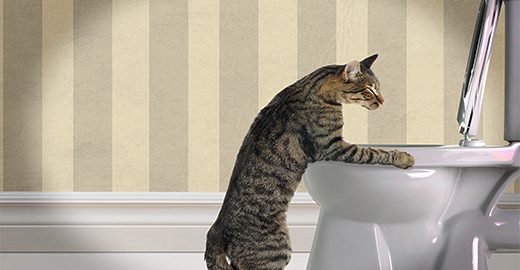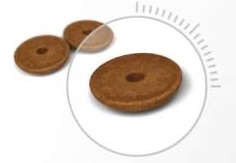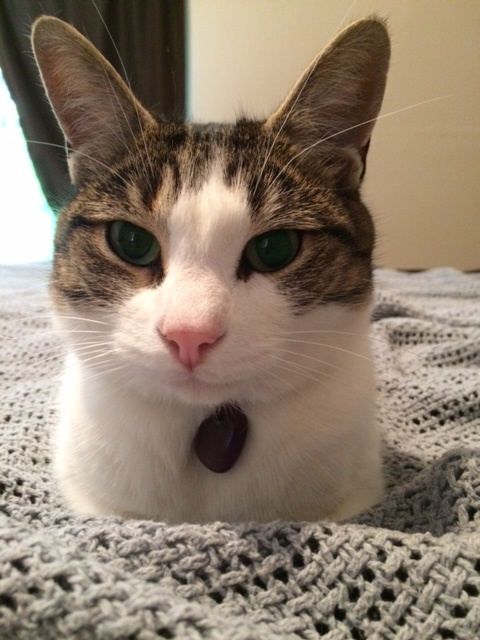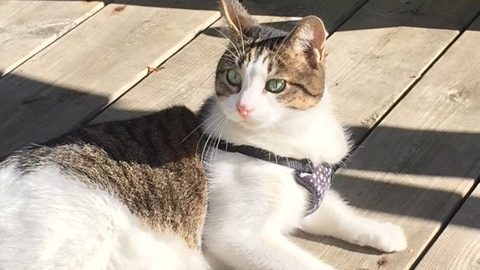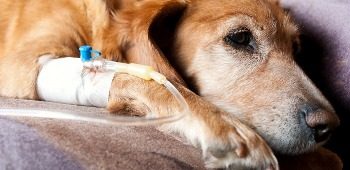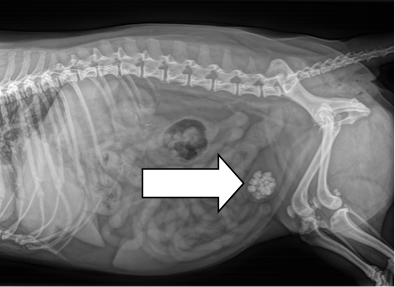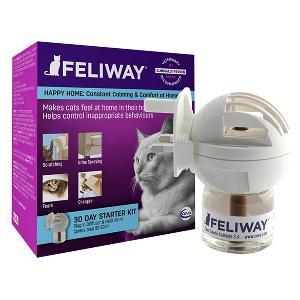A bit of history, I have restless leg syndrome (RLS) and have since at least 2008 and have been hypothyroid most of my life. Before all of this, I was working hard, felt (what I thought) was a normal amount of stress from daily life and my job, but I felt tired a lot. I got headaches often, sometimes daily, but attributed all of this to stress. I assumed I was normal and that the occasional anxiety I felt came with being an adult. The RLS wasn’t too bad, I would have problems a few times a week, and the insomnia and fatigue that came with it wasn’t too debilitating.
It started in 2012, though now that I think about it, it probably started before that though I don’t have any records of my medications before 2012. I am prone to sinus infections and ear infections. Maybe once a year I’ll get one or the other. My history starts in November 2012 when I had a sinus headache. I was prescribed Avelox for it and it worked as it had before. I know I had it in the past, but cannot say when, and I didn’t have any issues with it (that I knew of), so I filled the prescription and took it for the duration as prescribed. In February of 2013, I went back to my doctor as I was having some numbness in my fingers and my toes, as well as a recurrence of my sinus issues. Again, Avelox was prescribed and I was diagnosed with peripheral neuropathy. I started B12 injections as my values were low, and my doctor believes that maybe the reason behind my neuropathy, but he believed that a neurologist appointment would be a good idea. We did bloodwork, looking for lyme, thyroid, B12, mono, etc. all normal. By the time I went to see the neurologist in July, the tingling and numbness had increased to my forearms and calves, and I was aware of it when not moving around. My nerve conduction was normal, and from what I was told, there was no explanation at that time for the neuropathy. An MRI was performed of my head and neck as my symptoms are bilateral (same on both sides). They found a single focus of increased t2 within subcortical white matter in the right frontal lobe. (This info wasn’t given to me at all until my medical records recently became available to me and I was able to read through them). I was told everything appeared normal with my testing and MRI and to come back to see her if needed. I also was noticing by now that I was having some brain fog. I knew a word or a thought, but my brain wasn’t connecting properly, so I stumbled over my words a lot. I also was having issues with my thoughts jumping. I was thinking of one thing, then something completely random would pop into my mind and I couldn’t figure out where it came from, and I couldn’t get back to my original though at all. I felt stupid and slow. I still felt tired and the neuropathy was starting to affect me and I finally recognized my anxiety and depression so I was given Elavil to help me sleep. It did help, but not enough and it did nothing for the other symptoms. By now it is early 2014, and I decided to leave a job that I loved (and hated) for my physical and mental health. Soon after, a sleep study was conducted because of my fatigue and I had severely fragmented sleep. No wonder I was tired, moving every minute (literally). I started seeing a chiropractor who helped immensely with my daily headaches. The acupuncture did nothing for me. I weaned off the Elavil and in 2015, I got a second opinion from another neurologist, also with no answers. I started taking Cymbalta and it helped the neuropathy somewhat and it helped me sleep through the night, but it was still low quality and I was still fatigued.
May 2016, another sinus issue, again, prescribed Avelox. Fluoroquinolone toxicity is cumulative, that is worsens the more to you take it so I’m blaming the May prescription for my body pains. I saw a rheumatologist in Sept 2016 as I was having significant aches and pains, waking up exhausted, as if I had run a marathon in my sleep. Every muscle and joint had some level of discomfort, and having that along with the neuropathy made life and work difficult. But we have to sally forth. Nothing significant was noted by the rheumatologist, my issues we likely movement related, no evidence of fibromyalgia. From my research, the fibers and tendons in my body have now been affected. By now, I had twitching all over my body, felt like RLS but everywhere and 24-7. The sensation feels like a stiffness, like my body wants to maintain a specific position, the stiffness rises, until the sensation becomes too much and I jerk whatever body part is bothering me. The neuropathy was affecting my entire body by now, lips, scalp, face, all of it, but concentrated in my hands and feet. Relaxing was nearly impossible, and I didn’t get the sensation of sinking into my bed at night, almost like a constant tension. I felt like bands are being tightened around my muscles, like a blood pressure cuff, but on every muscle, almost like the fibres of the muscles themselves hurt. The neuropathy changes too from a jolt, to a vibration, to tension, to numbness, to needle pricks and the body pain ranges from a 2-8. All of this is affected by exercise, how tired I am, how much alcohol I’ve had and my physically demanding job. A 5th neurologist that I insisted I see finally believed my RLS and other symptoms and gave me Gabapentin (an anti-seizure and pain medication). It helps about 80% with the twitching and RLS, but does nothing for my neuropathy or body pain. It helps me sleep through the night, but I am still fatigued. I started meloxicam (an NSAID of course, which is contraindicated if you been “floxxed” by fluoroquinolones) which helped somewhat, but I didn’t like the long term effects, and it wore off too early so I’ve been taking Tumeric instead which has better effect for me. CBD does nothing for me, but THC helps the pains and aches, but doesn’t do much for the neuropathy. My old doctor has now retired so my new doctor who is young asked me if anyone has ever found a reason for my neuropathy. By now, I finally found out about the effect of fluoroquinolones and done some research and asked if that was possible due to the timelines. “Most likely” was his answer. It’s now May 2018 and finally, someone believed me and gave me somewhat of an answer, I’ll take it. Now I’m reading others stories and trying to find something that works for me and my lifestyle.
My current symptoms:
- tingling all over body-like when your foot falls asleep and the feeling is coming back
- internal vibration/tremoring-like you’ve cut the grass and your hands still feel the vibration, only all over
- concentrated in hands/feet
- poor sleep quality-can sleep 8 hours and wake up tired
- daytime fatigue-sometimes napping 3-4 times per day
- feeling of constant tension-Like my body wants to maintain the current position
- cannot relax-I tell my body to relax, then a minute later, it’s back to tense
- depression and anxiety attacks-mostly under control
- waking up with body aches-I feel like I’ve run a marathon in my sleep
- heavy feeling in limbs, yet tense
- twitching – may only be a muscle in my side, or my whole arm. Happens maybe every 5 minutes
- loss of sensation in hands/feet
- easily bruised
- deep pain when I hurt myself- like the smallest thing makes me feel like I want to vomit
- moderate exercise intolerance-worsens my neuropathic pain and I feel clumsy with the loss of feeling
- restless leg syndrome
- toes/fingers go white with cold
- concentration/recollection troubles
- hard time regulating body temp-sometimes intense night sweats (granted I am over 40 now)
I wish there was a definitive test for being floxxed. It still feel like I’m crazy, and it would be nice to just say “I have ………” instead of the long explanation that makes me sound crazy too.
Reading info online, I am trying Magnesium, Calcium, Vitamin D3, looking to try Probiotics, Omega 3’s, Glutathione, and D-ribose. I am going to try a diet change, but I have little will power when it comes to food.
Update-June 19 2018.
I’ve been taking the D-ribose, Omega 3’s and Glutathione for a week, the Magnesium, Calcium and D3’s bothered my stomach too much so I’ve stopped those, granted I didn’t feel really any difference on them. I have much better energy, the neuropathic pain and tingling has decreased by about 50%. I still feel the tension in my muscles, but when I try to relax them, I can’t, so I think this is relaxed for me, or my body is still in a repair phase and that will improve. Time is one of the biggest healers when it comes to being floxxed from what I’ve read. Meditation is also a good practice so I’m hoping to get started back on that real soon, along with yoga and/or stretching.
Fluoroquinolones should only be used when there are no other options. There is a big warning for peripheral neuopathy that comes with them, but the symptoms don’t always show up right away, mine came after exposure, so no one put two and two together. The medication info sheets also do not say that it can occur afterwards, but the FDA website does.
If you want more info on fluoroquinolones, it is fascinating how it works on bacteria, it’s a form of chemotherapy (which explains why some of my symptoms are so much like my dad’s who has been through chemo). Chemotherapy is using a drug to inhibit the growth and replication of cells in the body by stopping them from dividing and destroying them. Fluoroquinolones do that to bacteria, but it can affect healthy cells in certain bodies. This video is the best thing I saw to help me understand how it works and what it has done to me. https://www.youtube.com/watch?v=IkKZ_gxAOXI
Here is a site for info and stories. This is good for a list of symptoms. If you read this man’s story, it resonated with me quite a bit.
It’s really hard to me to put into words how I feel and I think this is the best I can do. Unless you are in a person’s body, you never truly understand what someone is going through mentally and physically, so I always try to keep an open mind and an open heart, please do the same with me. Thank you all for who have read this long story of mine and if you have questions, please ask. I’m here to learn and here to help.












